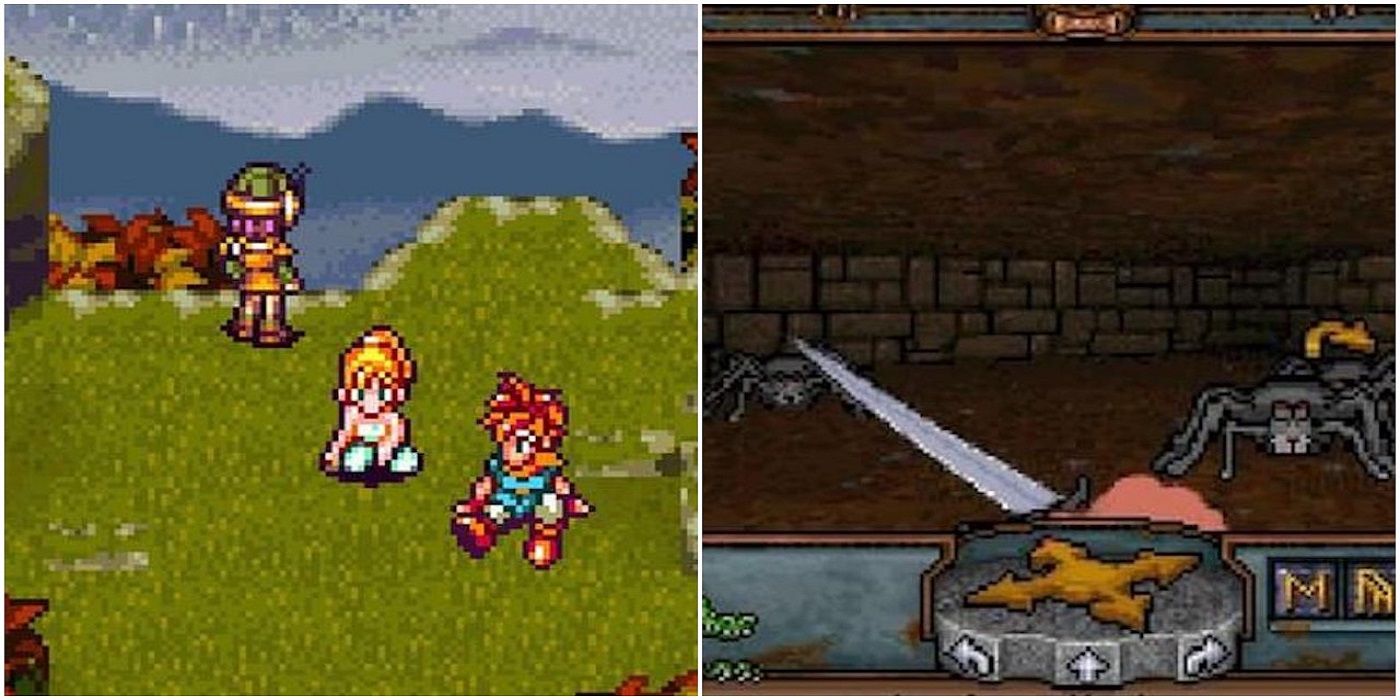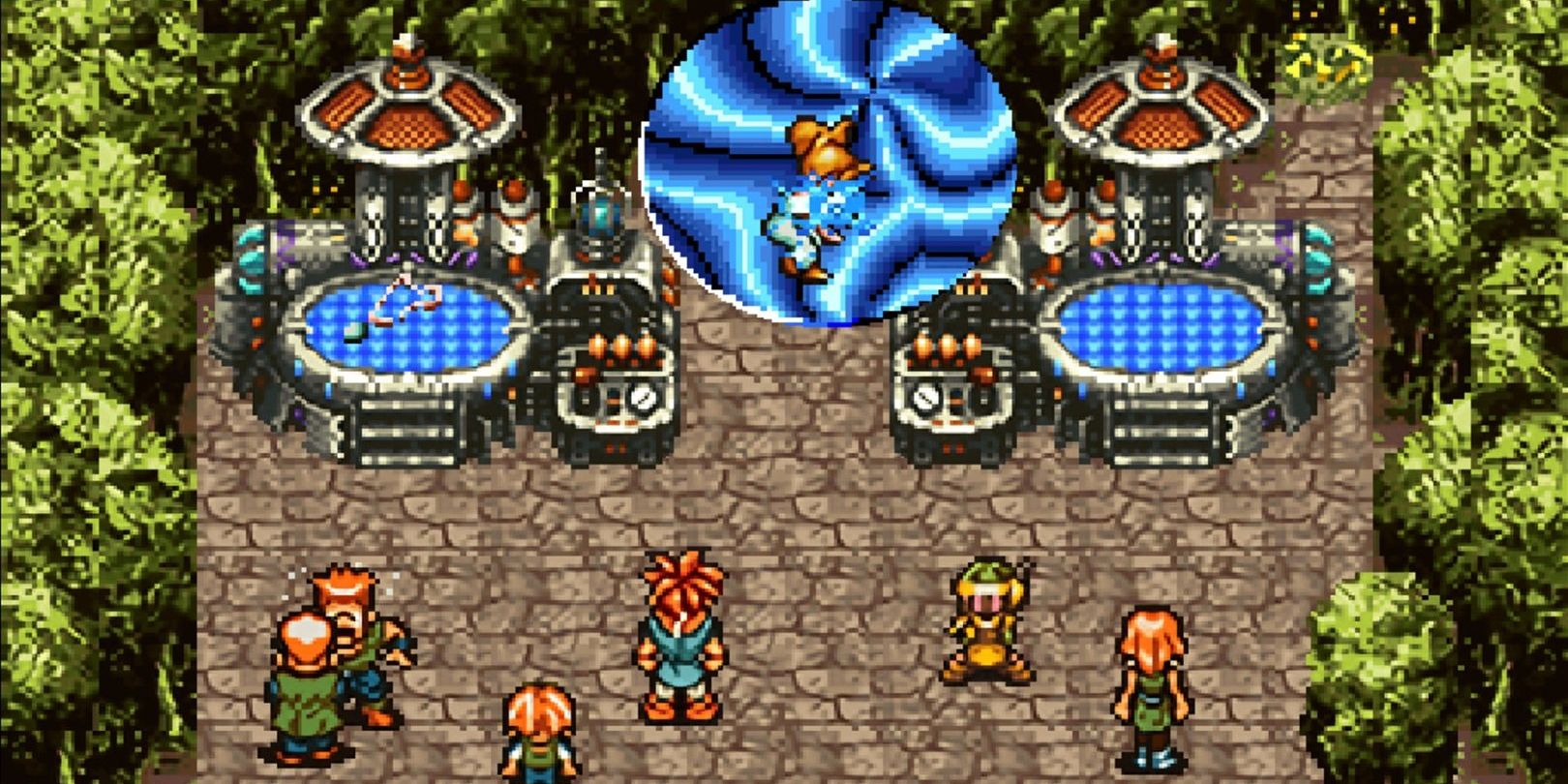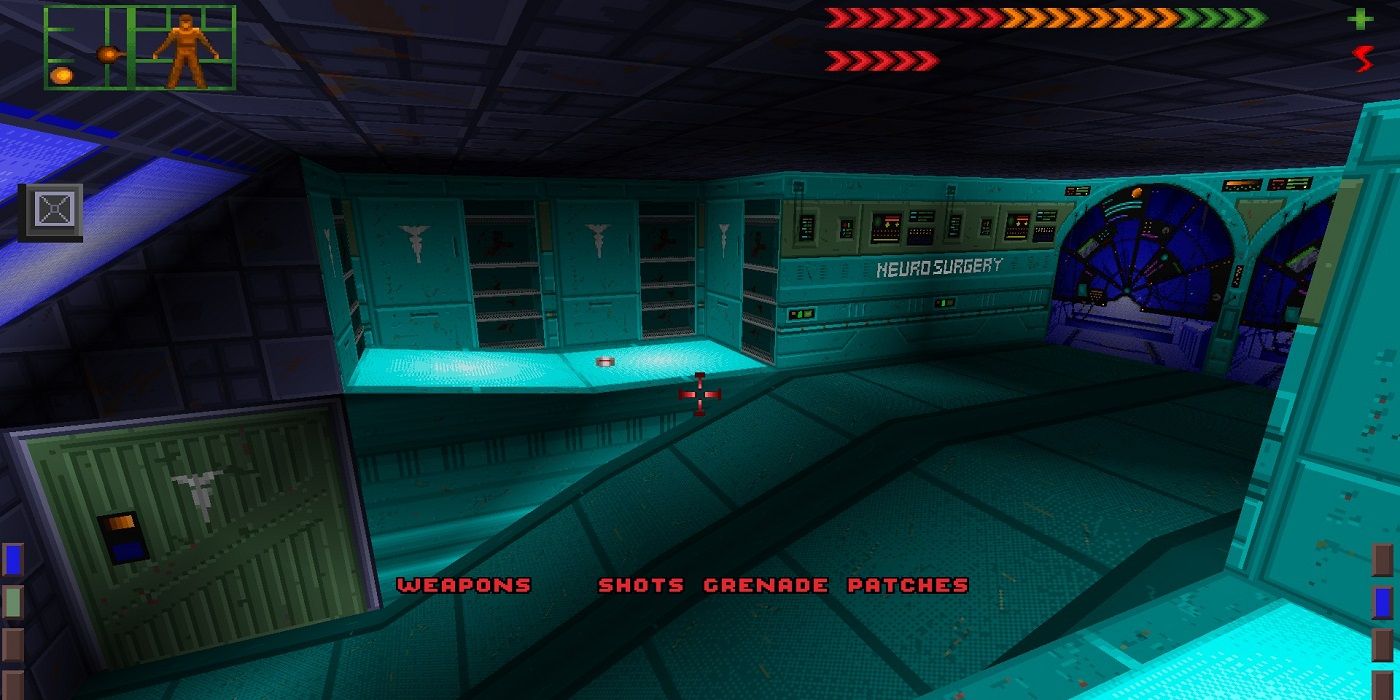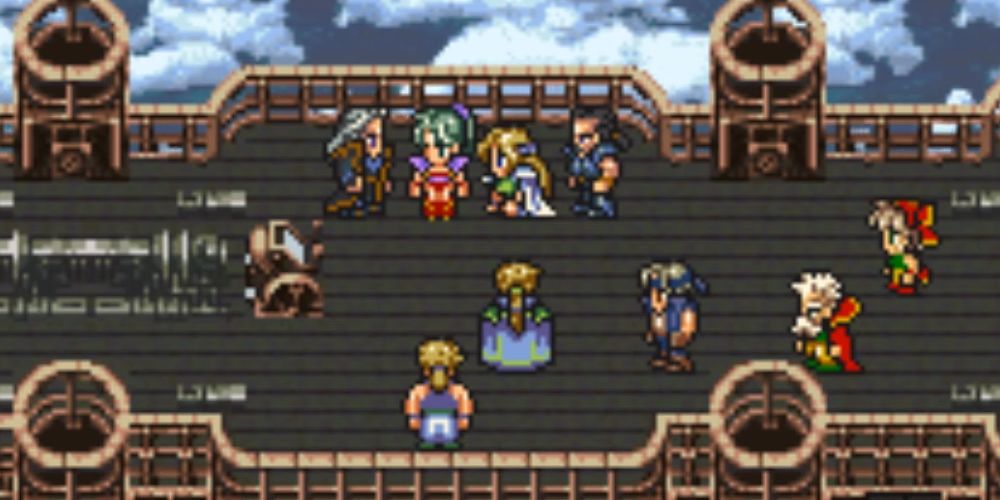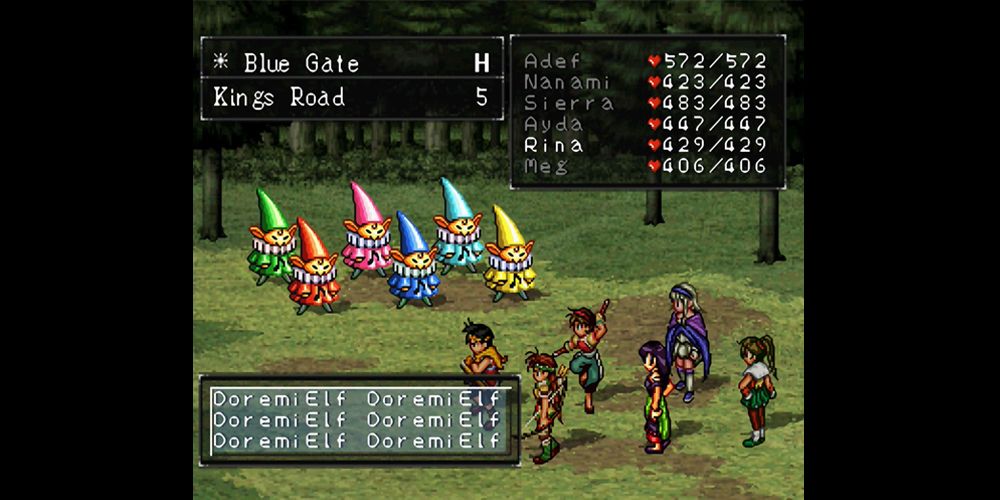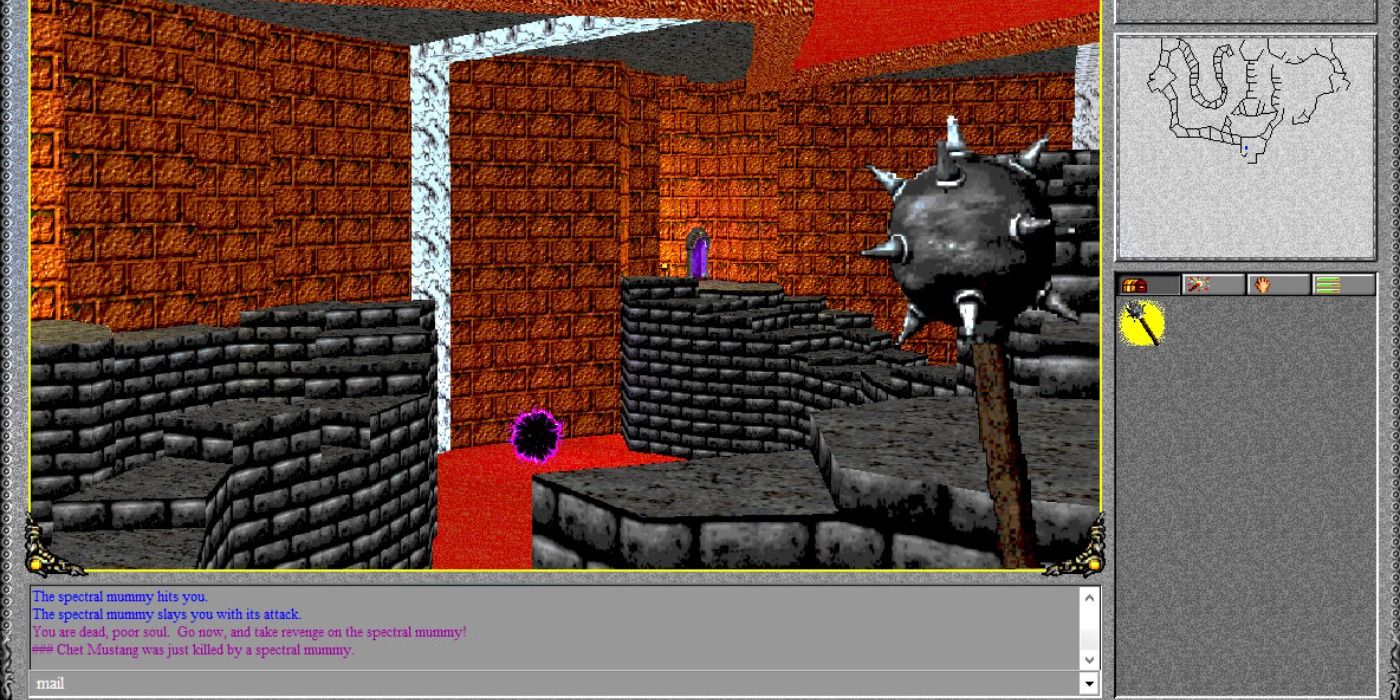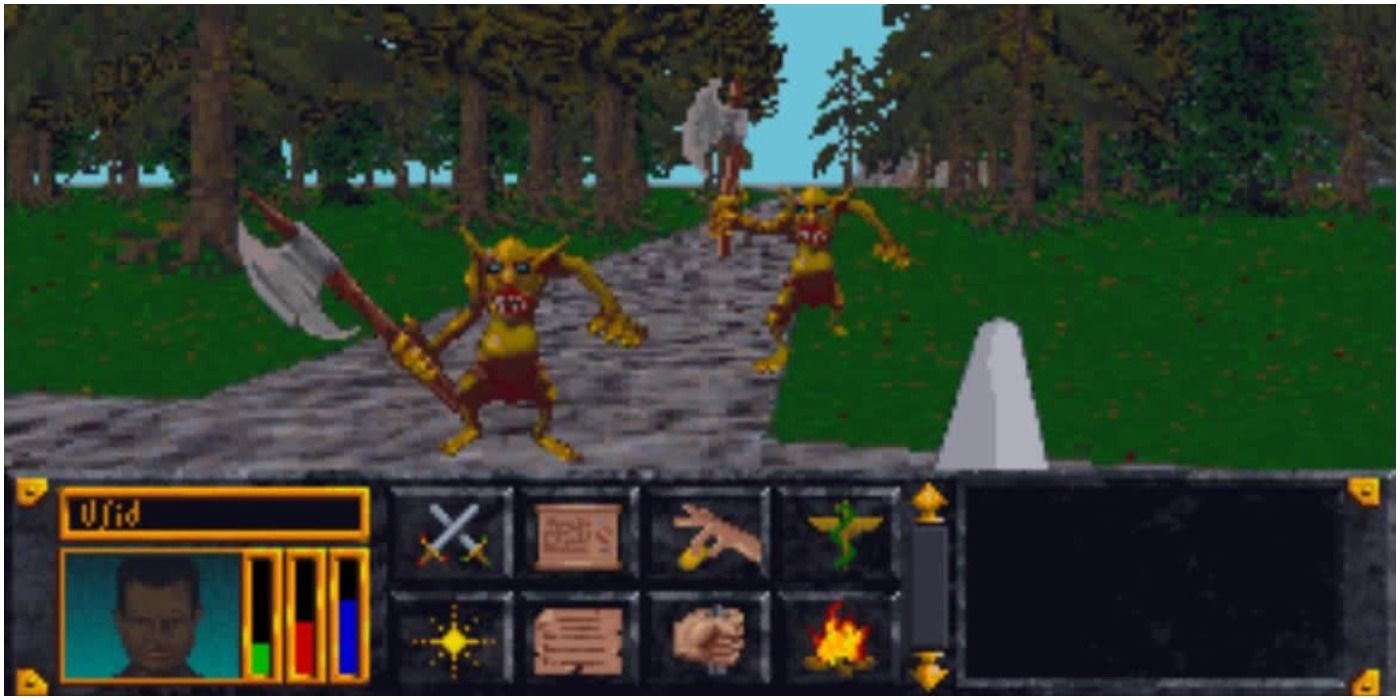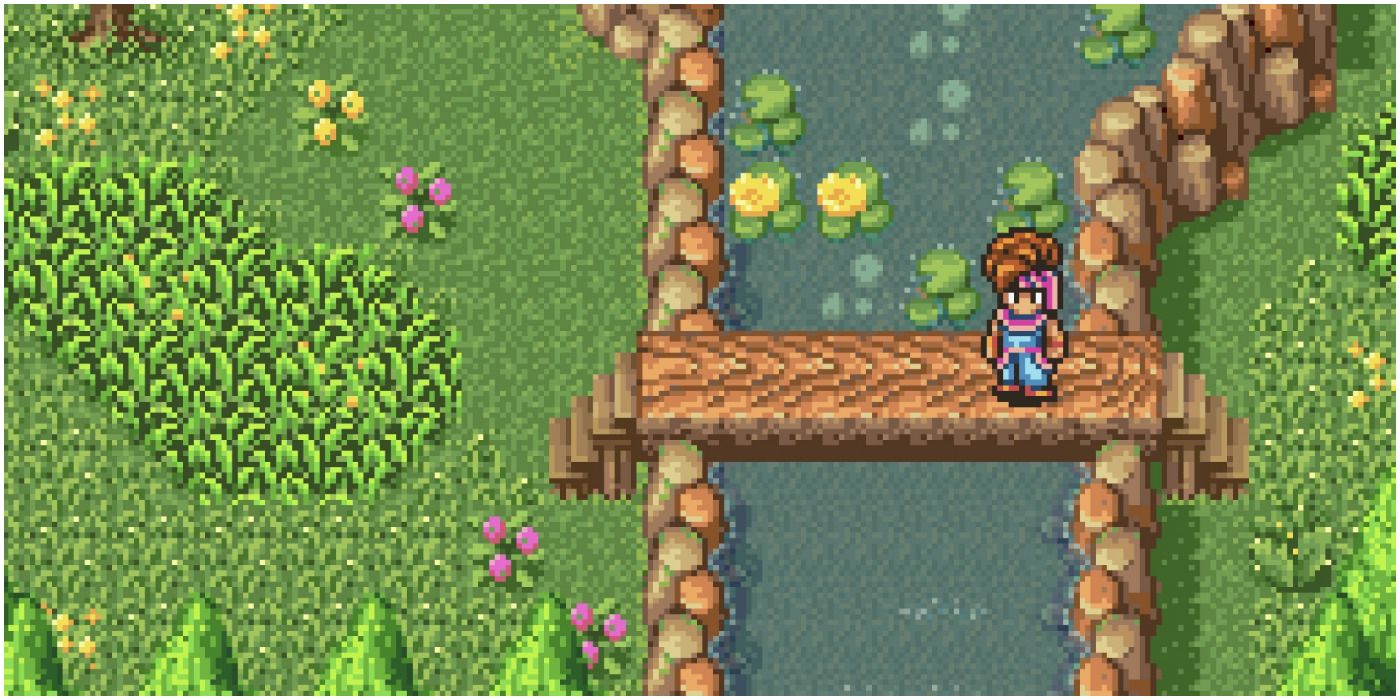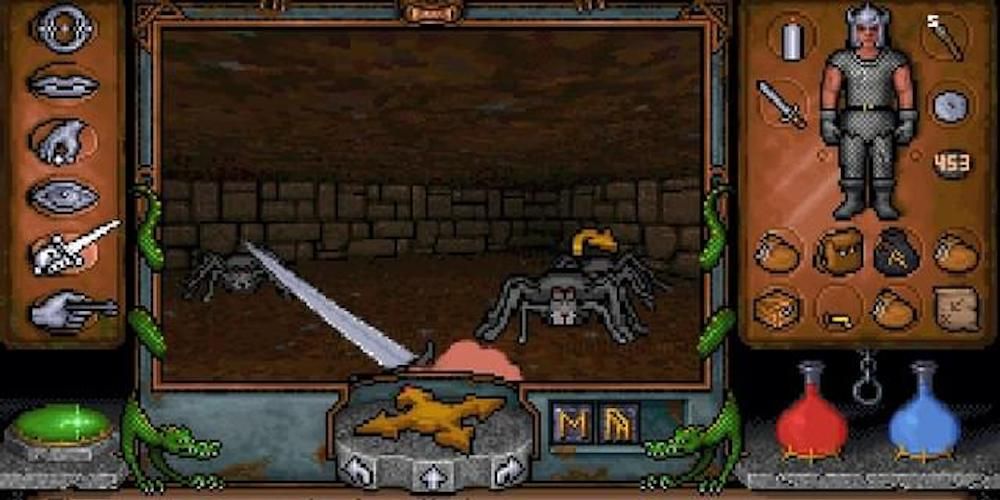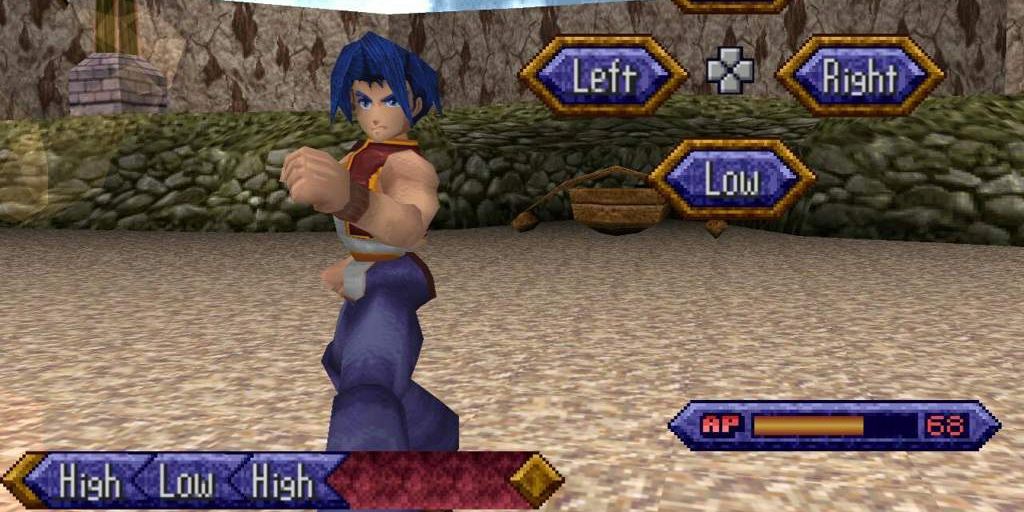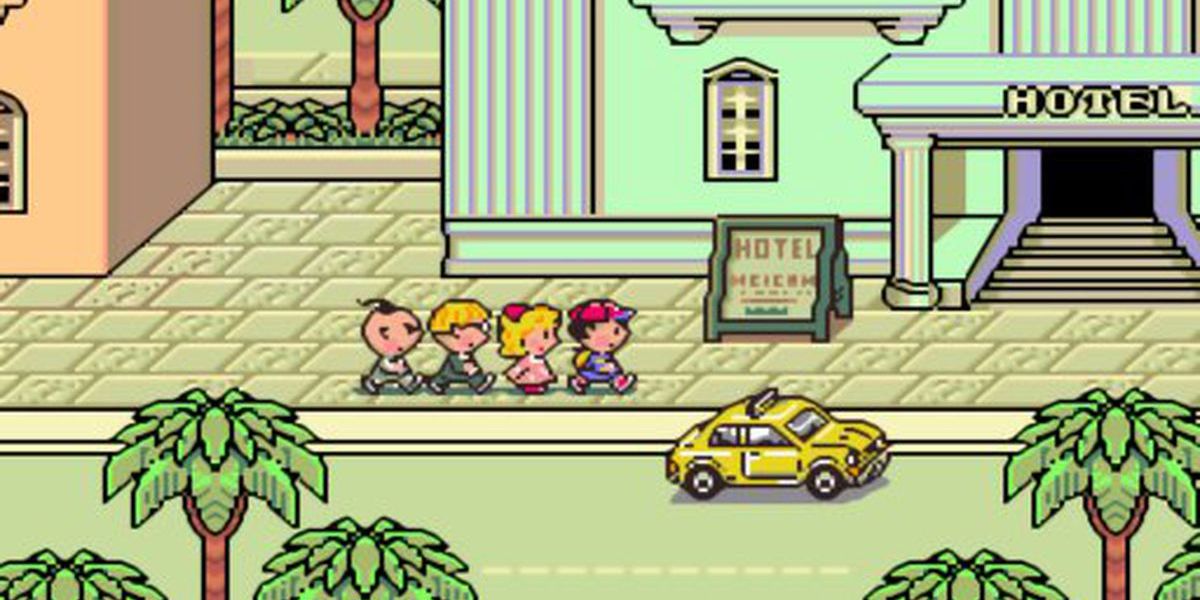RPGs were always an integral part of the gaming landscape, but they had a notable spike in the '90s. While the original PlayStation brought a genre renaissance ushered in with Final Fantasy VII, plenty of titles in the 2D, sprite-based realm gave fans countless hours of quality gaming on the SNES and Sega Genesis.
While many of these games followed a certain formula, a handful of titles were more ambitious, trying things its contemporaries were not even dreaming about. Not all of these titles hold up, but they deserve commendation and attention for taking bold steps in new directions.
10 Chrono Trigger
Chrono Trigger is not considered one of the best RPGs of all time without good reason. In addition to the excellent story, the gameplay introduces many mechanics other turn-based RPGs completely ignored. Mainly, enemies are present on screen at all times in the game world and battles are triggered by walking into them instead of relying on random encounters. New game plus lets players unlock numerous endings depending on what the player does throughout the journey.
9 System Shock
In the '90s, most first-person shooters were about high octane action and throwing as many enemies on screen as possible. The two System Shock games went against this trend by developing atmospheric worlds encouraging exploration and focusing player progression. Warren Spector produced the first game, who would go on to direct Deus Ex. The sequel dives even deeper into character customization aspects. It is good for both fans of RPGs and first-person shooters, and was made long before the genre more openly embraced RPG elements.
8 Final Fantasy VI
Up until the half way point, Final Fantasy VI feels like any other entry in the franchise, only more polished since it is the last mainline 2D game. However, there comes a point when a significant change occurs, the party is separated, and the player then has to go about regrouping their characters in preparation for the final encounter.
In a time when so many JRPGs were largely linear and had a straightforward endgame with few side quests, Final Fantasy VI took some huge leaps forward with a more open design.
7 Suikoden
First released in 1995, Suikoden boasts one of the highest party counts for any RPG, and just about any game ever released. Players are able to accumulate 108 allies to the fight. It is difficult to believe the PS1 and Saturn could even hold and process that much information. A spiritual successor, Elyuden Chronicle: Hundred Heroes is currently in development and recently had a notably successful kickstarter campaign.
6 Meridian 59
MMORPGs are more accessible than ever thanks to the ubiquity of the Internet and console games like Final Fantasy XIV. Back in the mid '90s, MMORPGs were only just getting off the ground, with Meridian 59 being the first MMO to ever feature graphics. The first-person game does many things differently than modern examples of the genre, like eschewing levels for individual stat progression based on play style, but it also established many precedents to which contemporary games still adhere.
5 Elder Scrolls: Arena
The Elder Scrolls is one of the longest-running western RPG franchises of all time. The first game came out in 1994, and it is surprising to see how much of the franchise's core spirit has remained intact. The 1996 sequel, Daggerfall, further established the series' formula, which has served The Elder Scrolls well for over twenty years. With the sixth numbered game currently in development, one wonders if it will make big changes to the series or be a natural evolution.
4 Secret Of Mana
On the Super Nintendo, many JRPGs were turn-based games in the vein of Final Fantasy or Dragon Quest. Secret of Mana and the following entries in the franchise were real-time action RPGs, a novelty for the console. They could also be played cooperatively with ease, letting a second player drop in and out seamlessly. It is also shorter than most other RPGs of the time, making for a nice breezy experience. In some ways it reminds one of the first Kingdom Hearts.
3 Ultima Underworld: Stygian Abyss
As impressively ahead of its time Elder Scrolls Arena is, Ultima Underworld: Stygian Abyss has it beat in terms of firsts. The title, directed by Richard Garriott, is considered the first RPG to take place in a 3D environment viewed from the first-person perspective, carving the path for future immersive sims and first-person games like System Shock, Dishonored, and Deus Ex. It is also on a smaller scale than most of the RPGs on this list, being more of a dungeon crawler than a full-fledged epic journey.
2 Legend Of Legaia
One of the more underrated games among the crowded JRPG library on the original PlayStation, Legend of Legaia deserves attention for its brilliantly unique combat system in a time when most other games were falling into a predictable formula.
Instead of characters only attacking once during their turn, they put in a combination of punches and kicks which can lead to special combos, or "Arts". The game earned one sequel, Legaia 2: Duel Saga, but it was set in a different world and no third game ever materialized.
1 Earthbound
During a time when RPGs were generally set in high-fantasy worlds, Earthbound was a science fiction RPG set in a small, modern day town. It also gets really weird, with much of the game either introducing bonkers concepts or subverting gaming tropes. The recently released Yakuza: Like a Dragon has drawn numerous comparisons to Earthbound with its quirky humor and odd characters along with the modern day setting.

